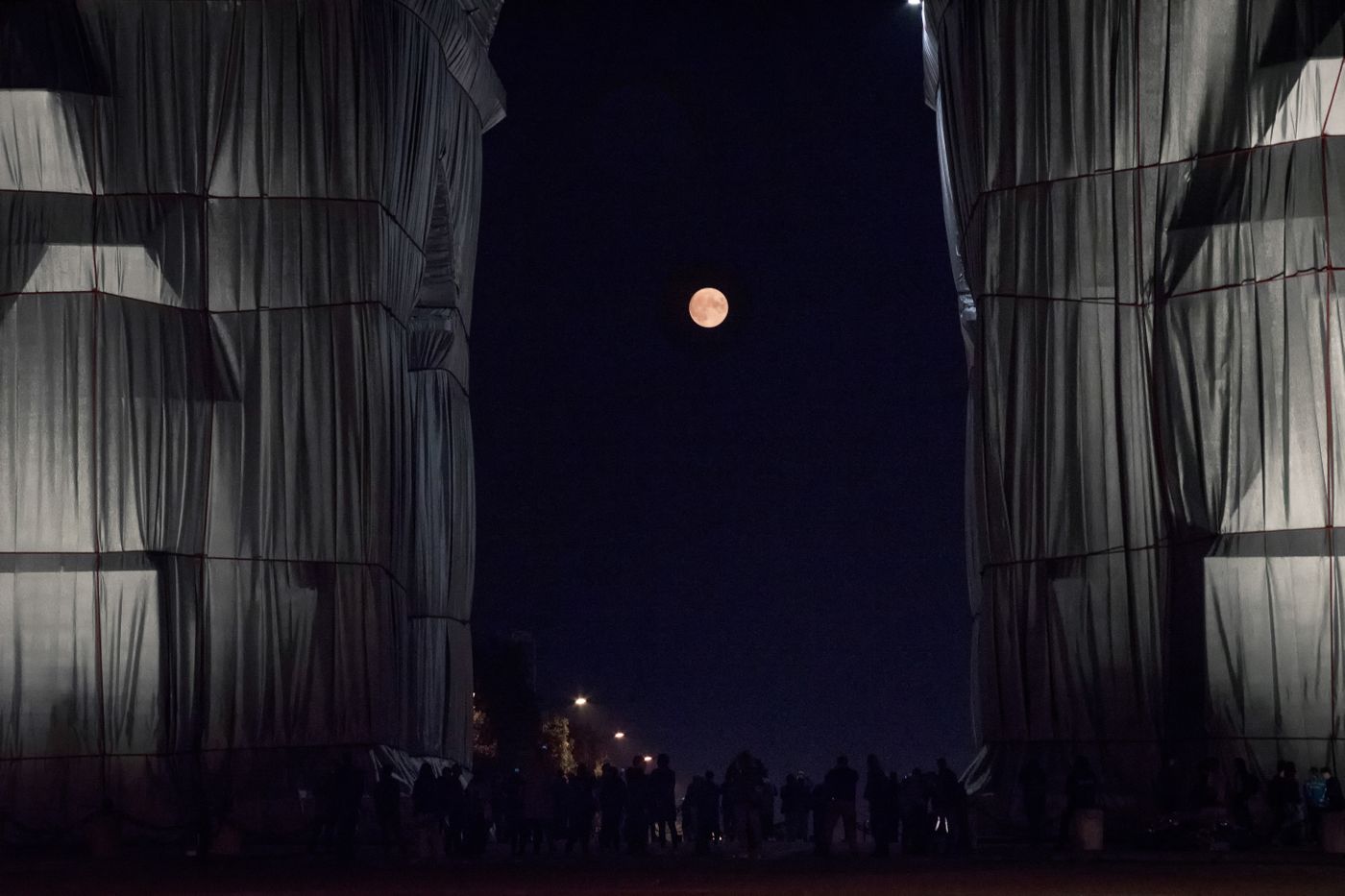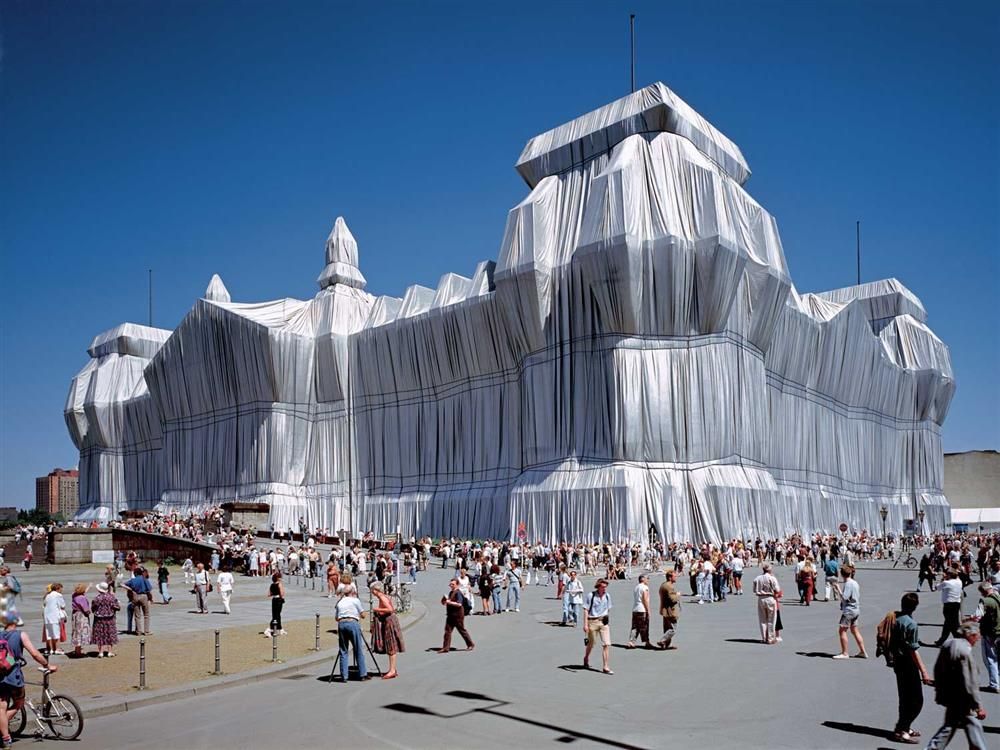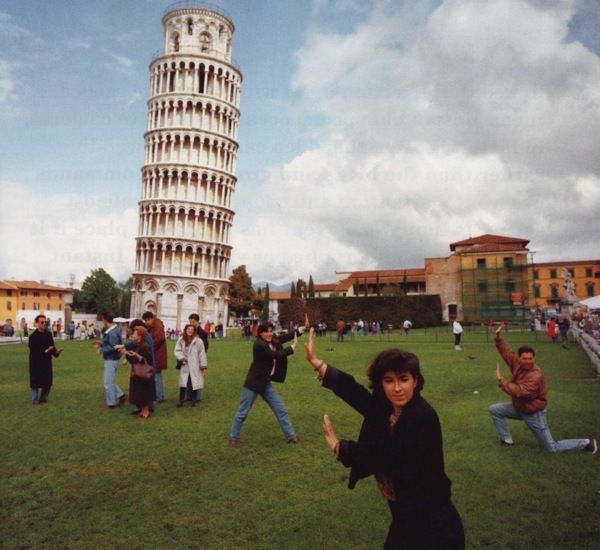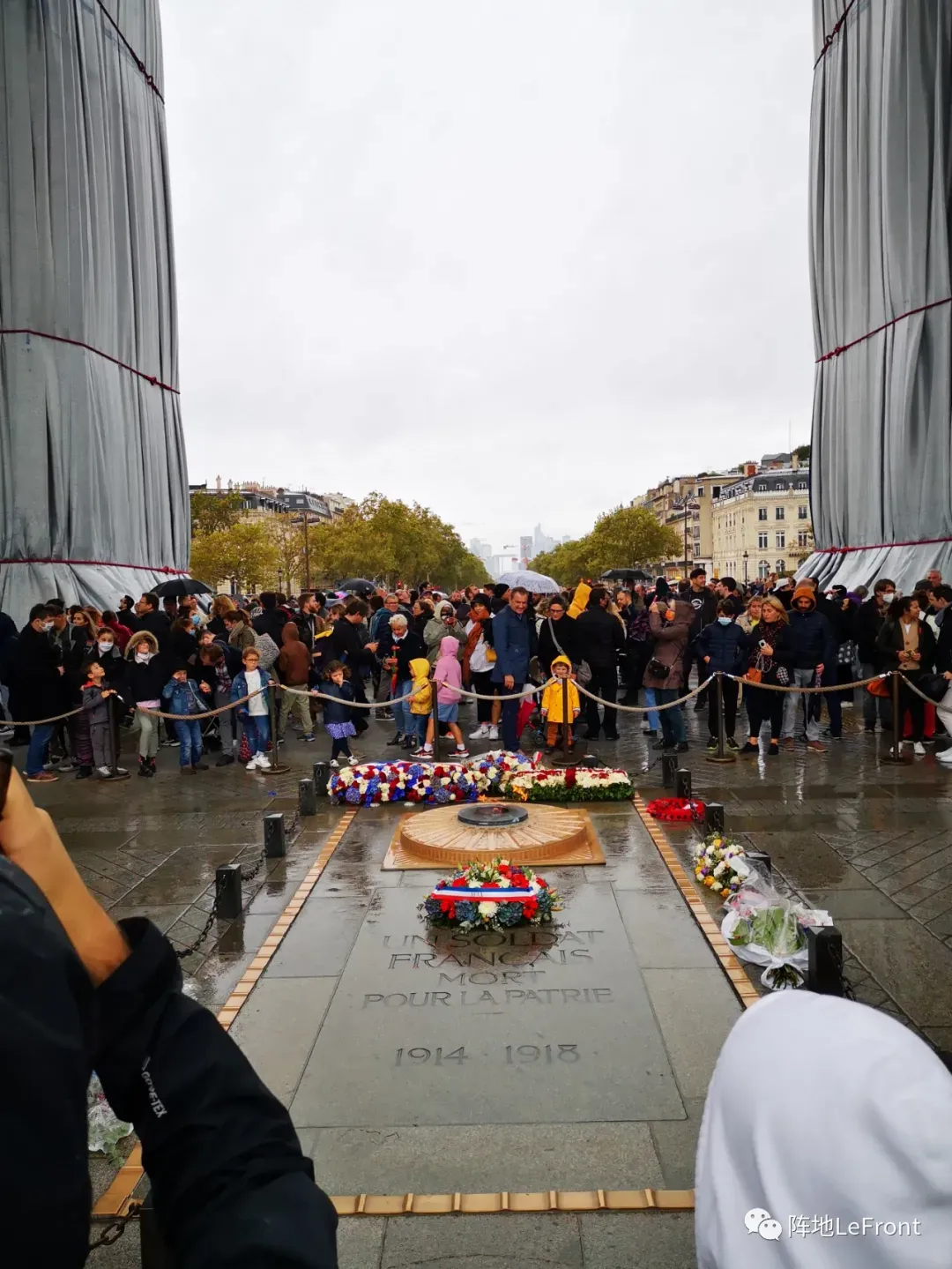
反賊,藝術家,情境主義者。生活在巴黎。 Instagram:chiangseeta 個人網站:https://chiangseeta.org/
"Bavasio Commune" Issue 1: From Christo
There are artists first and then art, and when there are works of art, there are audiences who appreciate art. New art creates a new public who appreciates new art. The debate between different views on works broadens the space for public speech, and the debate becomes more great social value. Teacher Lu Xinghua once put forward a metaphor. He believes that contemporary art works are like a football. When we watch football games, we obviously don’t just look at the rolling sphere. What we watch is the disputes, regrets and even the truncated dodecahedron. ACCIDENT. When we look at a work of art, we also look at its transformation and meaning in different social contexts. So it makes sense whether we like Christo's work or not, or whether we discuss "good" or "bad" work.

Shared by:
Chen Jingyuan: Graduated from the Printmaking Department of the Central Academy of Fine Arts, currently studying at the Brittany Academy of Fine Arts. Station B/YouTube "Drunk Talking Art" video host, former trumpet player of the Asakawa Drugstore Band.
Jiang Bu: Rebel, situationalist, filmed a documentary, drove a taxi, and went to the police station. Graduated from Beijing Film Academy and is studying at the Paris Academy of Fine Arts.
Qiao Shan: PhD student at Sorbonne University.
Christo's Interpretation and Being Interpreted / Chen Jingyuan
A year after Christo's death, a project to wrap the Arc de Triomphe in September brought the artist back into the spotlight. This giant project brings a huge freshness to the topic.
Born in 1935 in communist Bulgaria, Christo emigrated as a dissident, and after studying in Vienna came to France where he met his wife, Jeanne-Claude. This is a typical love story in the 1950s. The daughter of a high-ranking military official, an independent woman under the call of the times, abandoned her just-started marriage and resolutely married a poor foreign artist in exile. Since then, they have started to create together, and later immigrated to the United States together.
After completing three giant landscape works in Australia, "Bounding the Shoreline", "Miami's Pink Shore" and "The Huge Curtain in the Grand Canyon", Christo returned to Paris in 1985 to work on his large-scale project wrapping the Paris "Pont Neuf". The preparation of such a project of wrapping buildings in the city center is very complicated. In the project's documentary, his negotiations with Chirac, then mayor of Paris, were particularly impressive. Chirac's incomprehension and doubts made his project difficult and caused huge controversy in society. And time always makes the past full of filters, leaving romance and poetry. The news at the time commented: "This is a huge gift for the romantic summer of Paris." We can see in the news reports at the time that the citizens of Paris spoke at a slow pace that belonged to the 1980s, and their faces were full of excitement and excitement. Curious, Christo stands in front of the bridge to introduce his work, while the tramp still sleeps completely untouched under the bridge wrapped in gold-colored fabric.

Ten years later, in 1995, his most astonishing project "Wrapped the Reichstag" was carried out. For this project, he has been negotiating since 1971, and the final response is also amazing. The German Reichstag contains too much history. It is the symbol of the Weimar Republic, the site of the Reichstag arson, and indirectly led to the rise of the Nazis. In 1995, shortly after the merger of Germany and Germany, this amazing art project at the Reichstag also caused a huge response. We can imagine that when the huge curtain wraps the entire building, it seems to disappear in the space, leaving behind an abstract, beautiful and simple shape. When the curtain was lifted, we seemed to see the rebirth of the building, which seemed to be a metaphor for the rebirth of Germany and the coming of a new era.

There are rumors that Christo once planned to wrap Tiananmen Square, but it didn't take shape. This is undoubtedly a pity, and we can also imagine how fantastic the impact that such an iconic building can have in the "spring" of China's reform and opening up, a China that wants to cut its seat from the "revolutionary era". I believe that if this project takes shape, it may subtly affect the national psychology of the whole of China. We can never overstate the role of art, but we cannot ignore the power of accurate, subtle sidetracking in the rhythm of the times.
Christo has never been willing to interpret his works as above. He said that his wrapping art is all about "aesthetics" and is about art itself. Rodin's sculpture "Balzac" inspired him, wrapping to highlight the essence, shape of the object, eliminating texture, surface information and function, making the object "disappear". It can be well understood from his early works wrapping various everyday objects. But from the "Wrap the Reichstag" project, an interpretation like mine was inevitable. As a mature artist, he chose these buildings, and he must also deal with the information these buildings carry. Objectively, his works have entered the scope of such interpretation and must be interpreted in this way.
Christo's way of creating, what I call "dream", is that he produces dreams and works to make them come true. The process of realizing a dream is not a "dream" at all. This requires a lot of preparation, looking for social resources, negotiation, drawings, calculations, and construction, in order to realize the final "dream". And the most recent "last dream" that came true after his death was the project to wrap the Arc de Triomphe. The project was supposed to take place in 2020, but a series of surprises led to its delay. If it can be carried out smoothly last year, then we can imagine that the commemorative exhibition at the Centre Pompidou will be warmed up first, then the Tokyo Olympics will be grandly opened, and Paris will turn the world's attention to Paris in eight minutes, followed by this shocking art project. This is a Paris full of signals of joy and freedom, and the "deviant" art project brings the world a "romantic" and "inclusive" image of the city. Everything is in line with Macron's desire to gather the world's attention and expand his influence to "make the earth great again". The government and the artist seem to have formed a good partnership. And just like the art market, the art project that the government wants will always be "safety first". With the successful case of "Xinqiao" in the 1980s, this project must be in hand. And in the age of social media, where a lot of opinions are thrown out instantly and then have a huge impact, it seems that this project has not had the same effect as the previous two packages. The vaguely perceptible traces of deliberate arrangement are a little disappointing. The sluggish mood and growing pragmatism of the entire society in the midst of the virus did not provide a good environment for public opinion for the project. Furthermore, the source of funds for the project is suspected to be related to money laundering, which has to be questioned, adding more negative comments.
Maybe the art of "dream" should belong to the too, maybe it is the "past" of the future relative to the present, I don't know how we will feel decades later when we recall the huge fabric attached to the Arc de Triomphe in Paris this summer.
Art of Resistance and Art of Resistance / Jiang Bu
Friends who have seen Christo’s exhibition at the Pompidou before, or who have just heard about Chen Jingyuan’s introduction, can easily find that for Christo himself, he is undoubtedly sincere. He has worked with paper, rope, polyethylene, and various fabrics. Room furniture, canvases, and countless daily necessities. In the early 1960s, he used Photomontage (photo montage) to make sketches for wrapping public buildings. In his imagination, the wrapped Arc de Triomphe could "like a living object, swaying with the wind and reflecting with the light. , the folds will also rise with the wind.”
If we consider Christo's work in a larger, art-historical perspective, his wrap art took place in the 1960s when the avant-garde was in full swing, just like other avant-garde artists of the same period. They produced a large number of non-saleable, temporary (performance art, performance), out-of-the-art (Land art) and cheap (Arte povera) works. The logic behind this creative idea is that—since capital prices and auctions art, the artist produces (more often chooses) a work that is difficult to sell —contemporary art is born out of provocation and resistance, and avant-garde artists are committed to putting everything together The legalization of illegal things, in the context of the 1960s, they confronted the outdated discourse system of the art museum and the capital and power that made peace with it.
The irony, however, is that it is often power that determines ideas, not ideas that change power. When art becomes a tool of capital, it ceases to exist as a space for free expression and criticism— works that provoke art museums are collected by art museums, and works that resist capital are clearly priced by capital, and then openly auctioned . At the just-concluded FIAC, we saw that many galleries are representing Christo's drafts and early works, and the total price of previous works sold far exceeds the budget of 14 million euros for wrapping the Arc de Triomphe. It is difficult for the pioneering artists of the year to imagine that the land art that provokes capital with a radical attitude, and even Christo's "useless use" that appeared temporarily and disappeared, was without exception incorporated under the command of capital, just like a carnival in the consumer society. Regrettably, " contemporary art was originally expected to be an anti-capital and anti-authority revolution, but it was easily incorporated into the cultural system integrated into capital, and even domesticated into a new cultural industry. "1

Friends who have been to the site during the exhibition can feel that the speed of vehicles near the Arc de Triomphe has been significantly reduced, because there will be pedestrians who suddenly jump out in the "French-style crossing" method at any time and place. Foreigners, French, and Parisians have all turned into tourists in the shape of an Au at this moment. Everyone raised their mobile phones and raised their heads, as if waiting for the divine revelation in mid-air. However, miracles will never come, because the sight Only the digitized fragments of the Arc de Triomphe on countless screens and a dark night sky. The way everyone held up their phones was reminiscent of another farce in front of the Leaning Tower of Pisa shot by Martin Parr in "Small World," or Jose's award-winning photo "Signal" in 2014. But the most romantic part of the project wrapping the Arc de Triomphe may lie in this - it makes the Arc de Triomphe truly "slow down", making all Parisians temporarily become tourists in Paris, making everyone a stranger in the city , every time Individuals were exiled, and we were all homeless.

In fact, we have never been able to define what contemporary art is, because every contemporary art movement naturally leads to another counter-movement; every attempt to use art theory to discipline and restrain contemporary art will seduce Artists create works that go beyond the definition . In fact, meaning is often produced in confrontation - including confrontation with tradition, against politics, and even against time, Deleuze said in La femis's speech, "Art is meaningful only as a form of social resistance. The sum of all contemporary art works constitutes the changing "contemporary art", and the answer to "what is contemporary art?" has spawned one new contemporary art movement after another.
In the 19th and early 20th centuries, art standards were systematically established by art museums. Art museums were the authority to define art and non-art, and also symbolized the greatest common divisor of society's cognition of art. Therefore, the two avant-garde art movements (Dada and later Fluxus) claimed to destroy art museums, but images that destroyed idols often became new icons; art that tried to liberate itself from art museums often used the They are collected by art museums in a drastic way; even attempts to attack art museums in any form have been incorporated into the art museum system again and again, further consolidating the authority of art museums at a factual level . So Derrida said that to break the border, it is not only the frame that should be broken, but also the title, the signature, the museum, the archive, the reproduction, the discourse, and the market that is the frame.
Artistic action should no longer be content to create new images for the old system. In fact, what the true avant-garde seeks to do is not to change art, but to change human beings - to shape the concept of human beings with the works they choose. Beuys believes that everyone has the right to be regarded as an artist, everyone participates in the process of social construction, society itself is the medium of sculpture, and everyone becomes a part of "social sculpture". What was once seen as a right is gradually becoming a responsibility today. “The state, capital, and various ideologies rule us with installations (the apparatus of Agamben), and artists create another installation to subvert the installations that rule us. Artists create images and instigate symbols to Complete an uprising." ②
Before the Beuys-like illusion has arrived, artists should treat the works as events, tearing apart the outdated order, thereby constructing a possible time and space beyond, making it possible for an uprising that does not have to follow any rules. Art may be destined to fail, and failure also justifies its difference from "design" - design is oriented towards "success", and it is called to make the world better, but in fact it is against the status quo. Beautification and whitewashing of the peace becomes "the politics of aesthetics"; and art can, art is about "failure", accepting the status quo, accepting that there is nothing we can do about it, asking questions like Duchamp or an anarchist, but Not responsible for providing any solutions. Teacher Lu Xinghua believes, " The failure of art is to complete our new politics and to rehearse the coming democracy. Contemporary art needs to invent new tools for future politics, and it will also serve as a fuse to disappear when the new politics comes. ” ③
For an activist Fluxus or Dadaist, "art" is a concept that only began after the French Revolution - pre-Revolutionary works, even Leonardo da Vinci and Michelangelo, never It's all just "design" and "technique". However, "the Enlightenment struggled for half a century before the French Revolution could take place, and the labor movement struggled for a century before it gave birth to a strong "welfare state." The struggle to create the language needed to create a new order”4. Artists need to become a kind of "virus", to inspire and infect non-artists, to try to build a new public with new aesthetics and new vision for a new utopia; and art must continue to intervene in politics until politics no longer interferes with art. We want to write "revolution" on the walls so that the streets can kiss each other. In the days to come, we will be there, wherever there is a spark.
① "The Domesticated "Rebel" - Reflection on Contemporary Art System Combined with Cultural Industry Theory, @480693, https://www.douban.com/note/789361769/
② "What Contemporary Art Does", Lu Xinghua
③ Same as above
④ The Revolution is Coming, The Invisible Committee
Shroud of the Arc de Triomphe/Joshan
Paris does not lack monumental buildings belonging to the state and the French nation, nor does it lack museum buildings that have been occupied by the bourgeoisie and displayed to the people. In the former, people came from all sides of the city along the radial streets to see its majesty and glory; in the latter, the luxury and abundance of the feudal class became culture and art, transferred to the people for a fee, so that they could Come after work for a few minutes of cultural life and recognize yourself as a master from the thriving treasures. The Arc de Triomphe standing in Paris belongs to that monumental building. It has always been closely linked with Napoleon and the French nation. After adding the altar of fire dedicated to the fallen soldiers, it has more buildings under the auspices of state power. The meaning of the death ceremony (in addition to the mourning of the dead, it also shows the war that kills - military power). However, this death ceremony is not the original burial of Neanderthals tens of thousands of years ago, nor the Aztec human sacrifice in the pre-Columbian period, but a careful control and display in the face of death, as if afraid of the Filth and terror, as well as the out of reach of words, are revealed.

Under the arch, the flames on the altar keep beating, symbolizing the life of the soldiers who died under the blessing of the state machine, and the Arc de Triomphe is like the Homo erectus that appeared in the Paleolithic Age. The structure of the building goes straight to heaven and earth, symbolizing the perfect and supreme image of human beings. In this respect, the Arc de Triomphe is the forerunner of Le Corbusier. Otherwise, why would the walls of the Marseille apartment be carved with human figures and geometric patterns? Otherwise, why would Le Corbusier express an exploration of the human body structure in his artwork?
Destroying architecture is also destroying anthropocentrism, destroying anthropomorphism, destroying the figure humaine , as Denis Hollier summed up Bataille's "Architecture" in "Against architecture" That way. But destroying buildings doesn't have to be like burning down the Bastille like the insurgent crowd did, and Vandalism is not necessary here. At least that's what the artist Christo and his wife Jeanne-Claude have confirmed to us with their grand project "L'Arc de Triomphe, Wrapped": Wrapped Architecture , itself an anti-architecture. Wrapping the Arc de Triomphe is not to use artificial fabrics to make the "dead" architecture "live" again under the action of natural forces (although the wind "moves" the stone-built Arc de Triomphe like a curtain), but precisely to wrap the body The form of cloth conceals the Arc de Triomphe : the Arc de Triomphe becomes a dead thing, a taboo because of its covering, our eyes can no longer and should no longer be able to touch it, and the crowd who comes to watch witnesses a confrontation with the monument. Sacrifice of Architecture: Architecture passes away like life, and the authority of the nation and state apparatus becomes the "King of the Forest" in Fraser's "Golden Bough" because of the sacrifice, that is, the executed king.

Of course, things don't stop there. On the one hand , while covering the filth of death, the shroud also destroys the viewer's vision. In other words, the Arc de Triomphe is no longer a building that can be viewed and experienced as a sublime, but an anti-visual building (if we According to Juhanl Pallasmaa's division, the wrapped Arc de Triomphe-corpse is not a visual architecture, and of course it is not a phenomenological architecture as skin, but an architecture that directly touches and tears the viewer), it and Du Modern anti-retina art is in the same vein; on the other hand , the covering of the shroud disintegrates at the same time architecture as an extension of the architectural structure of the human body and its monumental character, which thereby reveals to us the base (such as Bataille’s genitals—stamens, intricate plant roots in filthy dirt, corns and calluses afflicted with big toes, monster sex as a natural deviation—often referred to in Bataille’s series of articles for the Archives) Subversion of the general hierarchy: the abstract entity (nation-state-military) incarnated as a majestic monument is reversed by the Shroud; moreover , instead of completely disappearing the Arc de Triomphe, the wrapping of the Shroud re-enacts its indeterminacy the materiality of the shroud, that is, the shroud does not leave the corpse absent, but exhibits the decay and disintegration of the physical body, a principle used in Didi-Huberman's "informal resemblance" (la ressemblance informe) In the same way, the shroud is the excess of the flesh, so we can also say that the shroud of the Arc de Triomphe is the excess of its material-stone. Now that the shroud has been removed and the artist's public exhibition project has ended, those who have witnessed the contagiousness of this sacred core (le noyau sacré) in the heart of the city will be as in the Lascaux frescoes Like the purified and transformed Homo sapiens, they will not forget the walking gestures they took on that day around this empty sacred place, and their appreciation for this sacred place that belonged to the nation-state. occupation, use and experience.
La Commune de Pavachol is a Parisian offline salon that discusses art based on the present. Bavashaw’s predecessor was “Nights of Ulm,” an offline salon that was also based in Paris and focused on humanities discussions. After the epidemic, Ulm was closed for various reasons. As the spiritual successor of Ulm, we believe that the salon should not only take place in the living room of the left bank, but also on the street, on the spot, and even more so. Where everything sparkles.
The Bavasio Commune organizes offline discussion salons in Paris from time to time according to events and themes. Friends who are interested in participating in discussions or providing discussion venues are welcome to contact us.
Like my work?
Don't forget to support or like, so I know you are with me..
Comment…